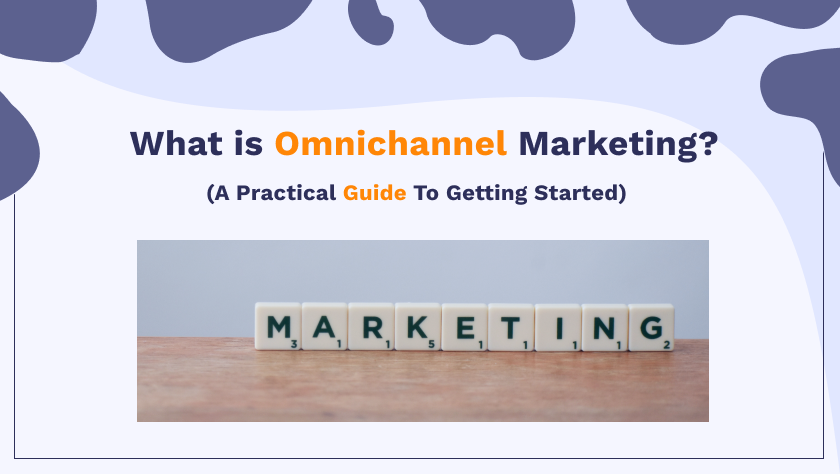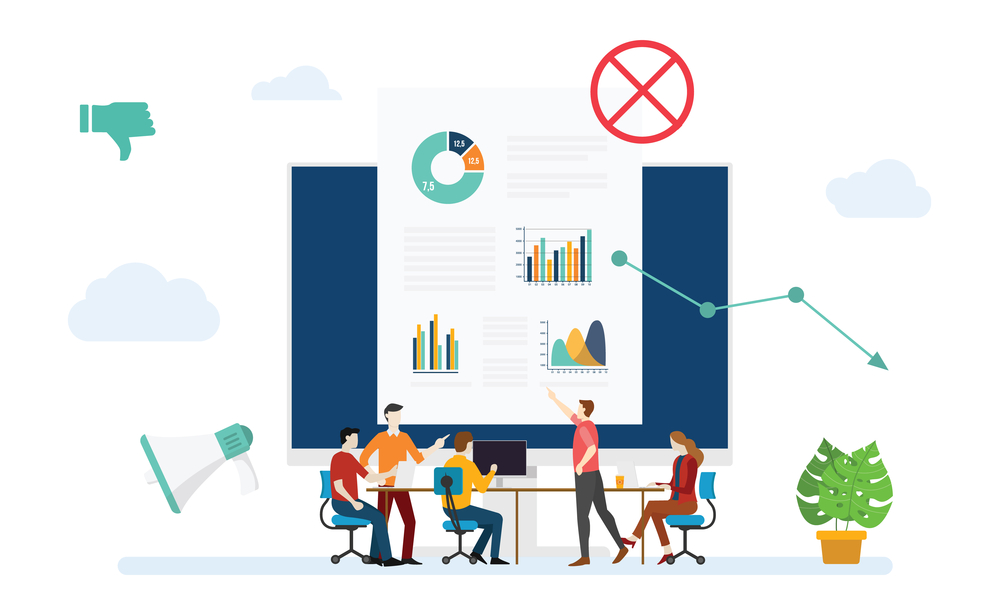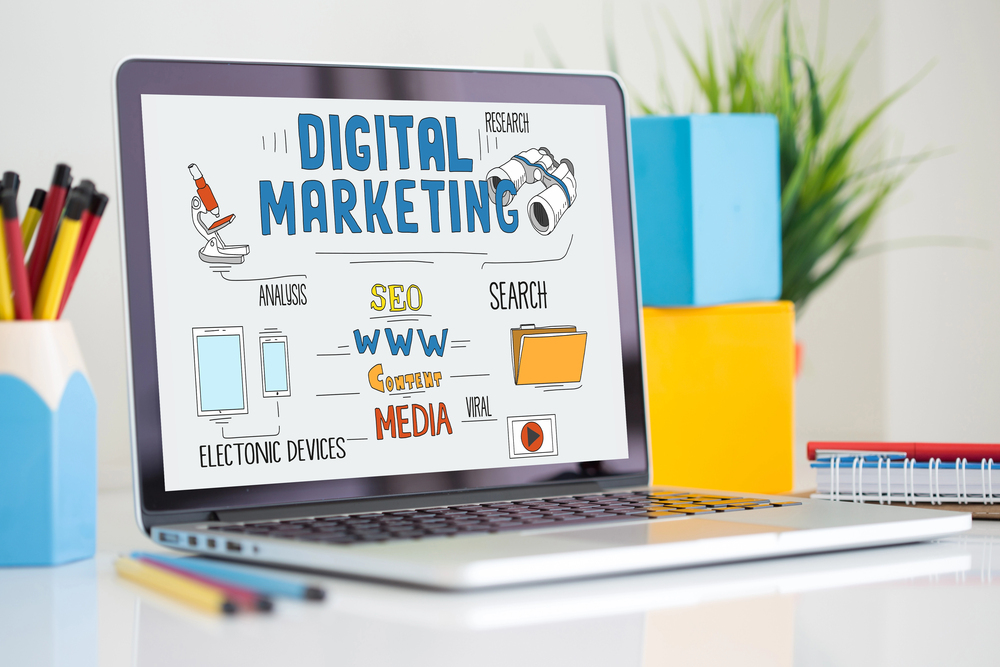Omnichannel marketing is the buzzword on the block right now. But before we dive into some practical ways to get started, let’s first take a step back and examine what it actually means.
Omnichannel marketing is all about integrating the various points of contact your company has with customers into one complete customer experience.
These include both online and offline channels, such as brick-and-mortar stores, ecommerce websites, social media platforms, and more.
Put simply: It’s about providing a seamless customer experience that is unified across all customer touchpoints – no matter where (or at what time) they engage with you.
Why is Omnichannel Marketing Important?
Nowadays the customer journey is much more complex than a simple point-of-sale transaction.
Today’s customers often research products online, but may buy them in a store. And even after making their initial purchase they may return for a refund or exchange, or to take advantage of a promotion.
With the rise of digital channels, consumers now expect to be able to buy anything, anytime, anywhere – and marketers have to adapt accordingly.
That means providing greater convenience for customers at different stages of the purchase journey and being able to answer their questions whenever they arise.
What’s more, as technology continues to develop at a rapid pace we can expect the customer experience to become even more complex in the future. This is why Omnichannel Marketing is so important.
3 Reasons Why You Should Start Using Omnichannel Marketing
The pros of using Omnichannel Marketing are fairly self explanatory:
1) It improves customer experience – Providing a consistent, unified customer experience with your products and services across all channels will cultivate trust and loyalty.
2) It increases your customer base – At the end of the day, having a larger audience to sell to is always good for business.
3) It helps grow overall brand awareness – When customers interact with your brand, they are more likely to become loyal fans. It’s a win-win!
Now let’s take a look at some practical ways you can start using this powerful marketing strategy.
Omnichannel Marketing Is As Simple As 1-2-3
There are three essential steps to getting started with Omnichannel Marketing.
The first thing you’d want to do is to identify your customer’s journey.
Over the years, it has become increasingly clear that there are multiple steps involved in the purchase of a product or service.
There’s the pre-purchase phase (where customers conduct research online and gather information about brands, products, etc.) and the post-purchase phase (where they return to engage with a brand for customer service, etc.).
In order to provide your customers with an experience that’s consistent across all channels, you will need to map out the various points at which you can interact with them. Once you know your customer’s journey, you can develop a “Customer Journey Map.”
How To Make Your Own Customer Journey Map
A customer journey map is an ideal way to see the various points of contact customers have with your brand at any given time.
While it won’t include every single point of sale that they’ll make, it will give you a good sense of the various touchpoints along their journey.
A good way to get started is to take a look at your website, your social media channels and look at all the content you put out for visitors to consume (product descriptions, blog posts, etc.).
You can also use tools like Google Analytics to explore where visitors come from and then apply the customer journey framework to understand how different channels differ.
From there, you can identify the points at which customers interact with your brand (i.e. online, in a store, online ads or through social media).
Once you have identified the various channels that your customer engages with, it’s time to map out each of these points of contact. A good way to start off is by using a flow chart of sorts. You can present it as a simple visual outline so that everyone in your team can have a good grasp of the customer journey.
Then you can go on to include more information about each channel, such as:
1) The contact method(s) used when interacting with customers in that channel.
2) The needs and goals of your customers at that particular point in their journey.
3) The offering – i.e. the product or service you are offering to your customer.
4) The purpose of the channel for your customers – For example, some may use social media to share information with friends and family, while others might use it to learn more about a brand or product they’re interested in.
5) The value the customer derives from it.
6) The language, tone and information they will need to engage with you.
The last step in this process is to define a strategy for each channel – one that helps you further meet the needs of your customers.
After creating your customer journey map, you should have a good idea of where your customers are at any given time.
From there, it’s fairly straightforward to come up with a marketing strategy (or Omnichannel Marketing Campaign) that suits each of their needs.
What Will Happen If I Don't Use Omnichannel Marketing?
The answer is fairly simple. Your current, and potential, customers will go elsewhere.
Think about it from their perspective.
They want to be able to find the information they need about your brand easily and quickly – all in one place.
They want to have a seamless buying experience – no matter whether they’re purchasing from your website, from an email campaign or in a physical store location.
They want to understand what the prices will be before they decide to make a purchase.
They want to have their questions answered in a timely manner.
How Do I Get Started With Omnichannel Marketing?
There are a number of ways to get started with Omnichannel Marketing.
1) Invest in the right technology – There are a number of tools that can help you connect all of your communication channels, regardless of whether you use a single platform or not.
2) Be consistent – Use the same language across different channels. This will help bridge any gaps and make it easier for your audience to follow along.
3) Be creative – Use your customer journey map as a reference point for developing campaigns that target each customer segment differently.
4) Be flexible – Don’t be afraid to test different ideas and gather feedback.
For example, you can send out a series of blog posts to one segment of your audience, while at the same time sending them emails (with links to those blog posts).
You can also send them materials that are tailored specifically to their stage in the customer journey.
This can include, but is not limited to, an information-packed email when they’re at a certain point in the process.
The basic idea here is that it’s good to take a step back and think about your audience and how you’re going to reach them.
What Should I Keep In Mind?
Omnichannel Marketing is driven by the consumer – they’re the ones that determine how they interact with your brand, which in turn drives the tactics that you use on any given channel.
You need to have a clear-cut idea of what you want them to do and the next step, be it a purchase or some other action.
It’s also good to understand how you can reach different customer segments on your various channels and determine which channels most likely will be effective for each segment.
Also, it’s important for you to keep an eye on what your competitors are doing.
You can get a lot of inspiration from them – both on some strategies that you can draw inspiration from, as well as new ideas and opportunities.
How To Conduct In-depth Research
As briefly mentioned above, you can conduct some A/B or multivariable tests to figure out what works best for you and your customers.
Or you can try testing your different product ideas (or features) with a target audience before going all in on one particular one.
Depending on who your audience is, there are many other things you can do ahead of time.
For example, if you’re dealing with the B2B market, attending trade shows and networking events can be a good way to get an idea of what your audience is looking for in terms of content and how they prefer to interact with you.
Another method – one that many brands use successfully – is to ask customers to fill out a survey after receiving a product or service. This way, you’ll have a better understanding of how customers perceive your offering.
What Makes A Great Omnichannel Experience?
There’s a misconception that omnichannel is only about communicating with customers and prospects at every touch-point, from email to social to mobile (and beyond), to keep their attention and encourage them to take another action.
While this is certainly a critical component of a great omnichannel strategy, successful implementation requires much more than just sending out more messages and calling it “omnichannel.”
In order to truly deliver a seamless and effective omnichannel experience, brands need to make it simpler for customers, providing them with value at every touch-point – from a website that offers the right mix of educational information and products to timely service delivered via whichever channel is most convenient for the customer.
Keep these six basic goals in mind when developing your omnichannel strategy:
1) Simplicity: Your customer should be able to understand what you offer with very little effort.
2) Trust: Customers should feel confident that you’ll do what you say, even if they don’t need your product or service immediately.
3) Accessibility: Customers should be able to find the right information, products and services quickly and easily.
4) Personal Service: Your customer should get personal attention from you whenever they need it, whether through chat or email, or when they meet your representative in person.
5) Value: Your customer should feel as though they got what they paid for, and more.
6) Speed: Customers should be able to move quickly through your entire product or service offering, completing the purchase or other action within a reasonable timeframe and with as little friction as possible.
It’s important to remember that a great customer experience doesn’t happen by accident.
A/B and multivariate testing can help you find which touchpoints provide the best ROI for your customers.
But it’s also important to recognize what works for you and your customers, which is why it’s so crucial to get started with Omnichannel Marketing.
The key is to get an idea of what they want and to make it clear that you want to help them.
What Is The Difference Between Omni- and Multi Channel Marketing?
Omnichannel Marketing is all about simplifying your customers’ journey.
It is about providing a seamless experience that’s consistent and personalized across all of their interactions with you.
Multi-channel marketing, on the other hand, is more of a business strategy that utilizes various communication channels to deliver content and information, engage with customers and encourage them to take action, regardless of where they are in the customer journey.
The Bottom Line
It’s no secret that consumers are having an increasingly difficult time finding the information they want.
This is contributing to the growing problem of brand fragmentation, which is creating a need for brands to work harder to connect with customers.
Thankfully, there are solutions out there that address this challenge.
Omnichannel marketing is one of them.
While it may seem difficult to implement at first, the outcome of your efforts will be well worth the effort.
As was mentioned at the beginning of this post, Omnichannel Marketing is truly a way to give consumers what they want – and to effectively reach your audience in a way that builds trust, loyalty and sales.
If you’re looking for a way to provide a better customer experience, we encourage you to explore your options and start using Omnichannel Marketing.
As always, if you have any questions regarding Omnichannel Marketing and how it can help grow your business, don’t hesitate to reach out to us.




